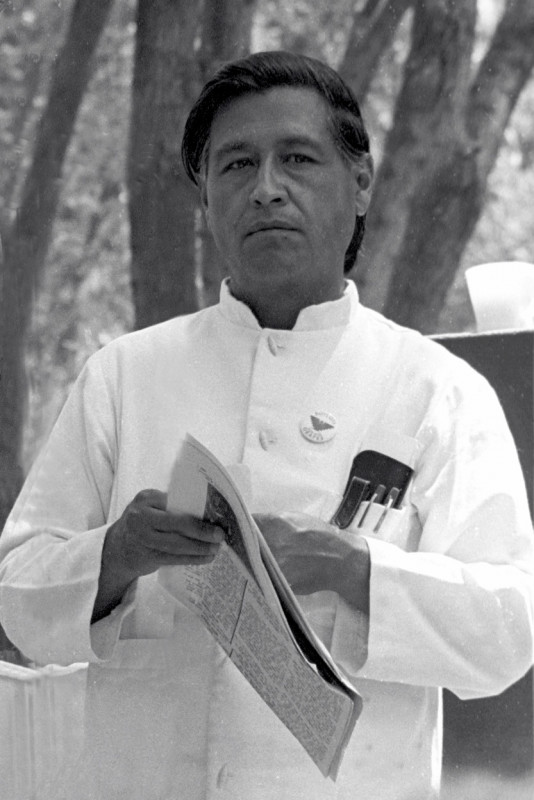How Cesar Chavez built a successful career. Explore key moments that defined the journey.
Cesar Chavez was a prominent American labor leader and civil rights activist. He co-founded the National Farm Workers Association (NFWA) with Dolores Huerta and Gilbert Padilla. NFWA later merged with the Agricultural Workers Organizing Committee (AWOC) to form the United Farm Workers (UFW) labor union. Chavez's ideology blended left-wing politics with Catholic social teachings, advocating for the rights and fair treatment of farmworkers through nonviolent means.
June 1942: Left Formal Education
In June 1942, Cesar Chavez graduated from junior high and left formal education to become a full-time farm laborer.
1944: Enlisted in the U.S. Navy
In 1944, Cesar Chavez enlisted in the U.S. Navy and was sent to Naval Training Center San Diego.
1946: Honorable Discharge from Navy
In 1946, Cesar Chavez received an honorable discharge from the Navy and relocated to Delano, California, where he returned to working as an agricultural laborer.
1947: Joined National Farm Labor Union
In 1947, Cesar Chavez joined the National Farm Labor Union (NFLU) and picketed cotton fields in Corcoran. He led caravans during the strike against the DiGiorgio grape fields.
1953: Laid Off and Hired as CSO Organizer
In late 1953, Cesar Chavez was laid off by the General Box Company. Fred Ross then secured funds so that the CSO could employ Chavez as an organizer.
1955: Returned to San Jose to Rebuild CSO Chapter
In late 1955, Cesar Chavez returned to San Jose to rebuild the CSO chapter there.
1957: Moved to Brawley to Rebuild Chapter
In early 1957, Cesar Chavez moved to Brawley to rebuild the CSO chapter there. The FBI began monitoring him.
1959: Became CSO National Director
In 1959, Cesar Chavez became the national director of the Community Service Organization (CSO), a position based in Los Angeles.
1959: Moved to Los Angeles as CSO National Director
In 1959, Cesar Chavez moved to Los Angeles to become the CSO's national director and settled into the Boyle Heights neighborhood.
March 1962: Resigned from CSO
At the ninth annual CSO convention in March 1962, Cesar Chavez resigned from his position as national director.
April 1962: Move to Delano and unionization efforts
In April 1962, Cesar Chavez and his family relocated to Delano, California. He began his efforts to form a farm workers' labor union, initially concealing his intentions by claiming to conduct a census of farm workers to assess their needs. During this time, he started developing what would become the National Farm Workers Association (NFWA).
September 30, 1962: Formalization of the National Farm Workers Association
On September 30, 1962, Cesar Chavez formalized the National Farm Workers Association (NFWA) at a convention in Fresno. He was elected as the group's general-director and the members agreed to pay monthly dues of $3.50 once a life insurance policy was established. The group adopted the motto "viva la causa" and a flag with a black eagle on a red and white background.
1962: Co-founded NFWA
In 1962, Cesar Chavez left the CSO to co-found the National Farm Workers Association (NFWA) in Delano, California. He launched an insurance scheme, a credit union, and the El Malcriado newspaper for farmworkers.
January 1963: Election at the constitutional convention
In January 1963, at the organization's constitutional convention held in Fresno, Cesar Chavez was elected president of the NFWA. Dolores Huerta, Julio Hernandez, and Gilbert Padilla were elected as its vice presidents.
1963: NFWA Activities
In 1963, Cesar Chavez retained control as the NFWA's general director, with the presidency role being scrapped. He began collecting membership dues before establishing an insurance policy for FWA members. Later in 1963, he launched a credit union for NFWA members. Bill Esher became editor of the group's newspaper, El Malcriado, increasing its print run.
September 1964: NFWA Headquarters Move
In September 1964, the NFWA moved its headquarters from Cesar Chavez's house to an abandoned Pentecostal church in Albany Street, West Delano.
April 1965: Rose grafters strike
In April 1965, rose grafters approached the NFWA requesting assistance in organizing their strike for better working conditions. The strike targeted Mount Arbor and Conklin companies. Aided by the NFWA, the workers struck on May 3, and the growers agreed to raise wages after four days, leading the strikers to return to work. Cesar Chavez's reputation began to spread through leftist activist circles across California.
September 1965: Delano grape strike begins
In September 1965, Filipino American farm workers organized by the Agricultural Workers Organizing Committee (AWOC), initiated the Delano grape strike for higher wages. Cesar Chavez and his largely Mexican American supporters voted to support them. The strike covered a large area, with Chavez dividing the picketers and insisting on non-violence. Police monitored and arrested strikers. The FBI launched an investigation into Chavez and the NFWA.
December 1965: Support and boycott campaign
In December 1965, Walter Reuther, president of the United Automobile Workers (UAW), joined Cesar Chavez in a pro-strike march through Delano, attracting national media attention. The UAW pledged $5,000 a month to the AWOC and NFWA. Chavez launched a boycott campaign, targeting companies which owned Delano vineyards or sold grapes grown there. The first target was the Schenley liquor company. Pickets were organized in other cities where Schenley's grapes were delivered.
1965: Decline in Picket Line Numbers
By 1965, Cesar Chavez noticed a decline in the number of people joining the picket lines. To address this, he invited left-wing activists to join, especially university students from the San Francisco Bay Area. Coverage of the strike in newspapers such as The Movement and People's World, helped fuel recruitment.
1965: Delano Grape Strike Began
In 1965, Cesar Chavez began organizing strikes among farmworkers, most notably the Delano grape strike.
March 1966: Senate Subcommittee Hearings and March to Sacramento
In March 1966, the U.S. Senate Subcommittee on Migratory Labor held hearings in California, with Senator Robert F. Kennedy attending the Delano hearing. As the strike began to weaken, Cesar Chavez decided on a 300-mile march to Sacramento to attract attention for their cause, starting with about fifty marchers leaving Delano.
June 1966: DiGiorgio Workers' Election and Boycott Switch
In June 1966, after negotiations with Schenley's lawyer, Cesar Chavez declared an end to the Schenley boycott, switching it to the DiGiorgio Corporation. An election was held among DiGiorgio workers, with the International Brotherhood of Teamsters competing against the NFWA. After the election terms were altered, Chavez removed the NFWA from the ballot and urged his supporters to abstain. The Teamsters won, but the election was declared invalid.
1966: Protest Camp in Delano
By late fall of 1966, a protest camp had formed in Delano, opening a medical clinic and children's nursery. Protesters were entertained by Luis Valdez's El Teatro Campesino, which put on skits with a political message. Tensions arose between the striking farm-workers and the influx of student radicals.
June 1967: Purge of the Union and Split with El Teatro Campesino
In June 1967, Cesar Chavez launched a purge of the union to remove those he deemed disruptive or disloyal, claiming he wanted to eject members of the Communist Party USA. Some members left in disapproval. Tensions with El Teatro Campesino led to Chavez asking them to disband, after which it split from the union.
August 1967: Strike and Boycott Against Giumarra
In August 1967, Cesar Chavez announced a strike against Giumarra, the largest grape grower in the San Joaquin Valley, followed by a boycott of their grapes.
1967: NFWA Merged with AWOC to Form UFW
In 1967, amid the grape strike, Chavez's NFWA merged with Larry Itliong's AWOC to form the United Farm Workers (UFW).
February 1968: Chavez begins a fast
In February 1968, Cesar Chavez began a fast to reaffirm his commitment to peaceful protest. He stated he would remain at Forty Acres, which only had a gas station at the time. Members of the union were critical of the fast. After three weeks, doctors urged him to end the fast and he agreed to do so on March 10, inviting Robert Kennedy as the guest of honor.
July 1969: Negotiations with Grape Growers
In July 1969, Cesar Chavez negotiated contracts with Lionel Steinberg, a grape grower in the Coachella area, allowing Steinberg's products to be sold with a union logo, exempting them from the boycott. Other Coachella growers eventually followed suit.
July 1970: Conflict with Teamsters in Salinas Valley
In July 1970, the Grower-Shipper Association renegotiated contracts with the Teamsters, angering Chavez, who traveled to Salinas to rally lettuce cutters dissatisfied with the Teamsters' representation.
July 29, 1970: Delano Growers Sign Contracts
On July 29, 1970, the Delano growers signed contracts with the union at Forty Acres Hall, agreeing to wage rises for pickers, a health plan, and safety measures regarding pesticide use.
1970: Delano Grape Strike Ended
In 1970, the Delano Grape strike that Cesar Chavez helped organize came to a close.
November 1972: Defeat of Proposition 22
In November 1972, Proposition 22, which would have banned boycott campaigns in California, was defeated by a margin of 58 percent to 42 percent, after a campaign run by LeRoy Chatfield.
April 1973: Strike in Coachella Valley and Conflict with Teamsters
In April 1973, after the UFW's contract with grape growers in Delano expired, Chavez called a strike in the Coachella Valley, leading to clashes with the Teamsters who sought to replace the UFW.
September 1973: UFW's First Constitutional Convention
In September 1973, the UFW held its first constitutional convention in Fresno, establishing a new constitution that granted significant powers to the president and altered membership fees and requirements.
November 1974: Election of Jerry Brown
In November 1974, the Democratic Party's candidate, Jerry Brown, was elected governor of California.
1974: Struggles and European Tour
By 1974, the UFW was again facing financial difficulties and a floundering boycott, leading Chavez to travel to Europe to seek support from unions and meet with Pope Paul VI in Rome.
1974: Proposal for a Poor People's Union
In 1974, Chavez proposed the idea of a Poor People's Union to reach out to poor white communities in the San Joaquin Valley, who were largely hostile to the UFW.
February 1975: March to Gallo Headquarters
In February 1975, the UFW organized a four-day march from San Francisco to the Gallo headquarters in Modesto, amassing a crowd of around 10,000 protesters to rekindle the successes of the late 1960s.
June 1975: California Agricultural Labor Relations Act (ALRA) Signed into Law
In June 1975, Governor Brown signed the California Agricultural Labor Relations Act (ALRA) into law, guaranteeing farmworkers the right to a secret ballot and widely seen as a UFW victory.
July 1975: "1000 mile march" and UFW Convention
In July 1975, As the UFW prepared for the elections in the fields, Chavez organized a "1000 mile march" from the San Diego border up the coast in July 1975 and he stopped to attend the second UFW convention.
1975: California Agricultural Labor Relations Act Passed
In 1975, Cesar Chavez's alliance with California Governor Jerry Brown helped ensure the passing of the California Agricultural Labor Relations Act.
July 1976: Chavez Attends Democratic Party's National Congress
In July 1976, Cesar Chavez traveled to New York to attend the Democratic Party's National Congress, where he delivered a speech nominating Brown as the party's presidential candidate. While Brown came in third, Jimmy Carter won the election, initiating an administration favorable to funding UFW projects.
November 1976: Purge of UFW Staff
In November 1976, Chavez blamed Nick Jones, the UFW's national boycott director, for the Proposition 14 defeat and accused him of conspiracy. Jones resigned, expressing concerns about Chavez's leadership. Chavez fired Joe Smith and ordered interrogations of campaign staff, leading to a McCarthyite atmosphere and press attention within the UFW.
November 1976: Proposition 14 Defeated
In November 1976, Proposition 14, intended to enshrine farmworkers' rights in California's constitution, was defeated by a two-to-one margin. Despite concerns from Chavez and Brown, the UFW devoted resources to the campaign. Growers funded a campaign emphasizing the measure would allow unions to trespass on private property. Chavez viewed the defeat as a personal rejection.
April 1977: "The Monday Night Massacre"
In April 1977, at a La Paz meeting called "the Monday Night Massacre," Chavez denounced individuals as malcontents or spies. Executive board members verbally abused and ejected them from the community. Chavez later accused Philip Vera Cruz of conspiracy and forced him out.
June 1978: Chavez Jailed During Arizona Melon Strike
In June 1978, Cesar Chavez joined a picket in Yuma as part of his cousin Manuel's Arizona melon strike, breaking an injunction, which led to his jailing for a night.
September 1978: UFW Suffers Election Losses
By September 1978, vegetable workers were increasingly frustrated with the UFW, especially regarding its medical plan. In the 22 farmworker elections between June and September 1978, the UFW lost two-thirds of them.
January 1979: UFW Launches Strike Over Wages
In January 1979, to regain the trust of vegetable pickers, Chavez launched his Plan de Flote and a new strike over wages. The UFW made wage demands days after its contracts expired, impacting eleven lettuce growers in the Salinas and Imperial Valleys, causing lettuce prices to soar.
1979: Strike against Maggio company
In 1979, the UFW conducted a strike against Maggio company. The UFW was later found liable for damages to the Maggio company for illegal actions that the union carried out during the 1979 strike in 1987.
May 1980: Training Session for Paid Workers' Representatives
In May 1980, Chavez brought the paid workers' representatives to La Paz for a five-day training session to ensure a smooth relationship between the growers and the UFW under the new contracts.
May 1981: Chavez Insists on UFW Infiltration
In May 1981, Chavez called a staff meeting at La Paz, insisting that the UFW was infiltrated by spies and arranged for loyalists to be put on the executive board, which now had no farmworkers.
September 1981: UFW's Fresno Convention and Allegations of Antisemitism
At the UFW's Fresno convention in September 1981, paid representatives nominated their own choices for the board, leading Chavez's supporters to distribute leaflets accusing them of being puppets of "the two Jews," Ganz and Cohen, resulting in allegations of antisemitism against Chavez.
1982: Jerry Brown leaves governorship
In 1982, Jerry Brown's term as governor of California ended and he was replaced by Republican George Deukmejian, who had the support of the state's growers. Under Deukmejian, the ALRB's influence declined.
1982: Decline in UFW Dues
In 1982, the dues that membership brought in were $2.9 million.
January 1983: Decline in UFW Contracts
In January 1983, UFW contracts covered 30,000 jobs.
November 1984: Chavez Speaks to Commonwealth Club of California
In November 1984, Cesar Chavez gave a speech to the Commonwealth Club of California. The UFW also launched a print shop.
January 1986: Further Decline in UFW Contracts
By January 1986, UFW contracts had fallen to 15,000 jobs.
1988: Jury Verdict Against UFW
In 1988, a jury returned a $5.4 million verdict against the UFW in a legal battle with Bruce Church, who claimed libel and illegal threats to supermarkets selling Red Coach lettuce. This verdict was later thrown out in the appeals court.
1990: Appearances at 64 events
In 1990, Cesar Chavez appeared at 64 events, earning an average of $3,800 for each appearance, continuing to market himself as a heroic figure.
1991: "Public Action Speaking Tour"
In 1991, Cesar Chavez launched a "Public Action Speaking Tour" of U.S. colleges and universities. His speeches covered the problems facing farmworkers, the dangers of pesticides, the alliance of agribusiness and the Republican Party, and his view that boycotts and marches were a better means of achieving change than electoral politics.
1993: Testimony in Yuma Court
In 1993, Cesar Chavez was called to testify in front of a Yuma court regarding the legal battle between the UFW and Bruce Church. A verdict against the UFW would have been financially devastating.
Mentioned in this timeline
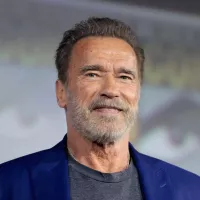
Arnold Schwarzenegger is an Austrian-American actor businessman former politician and...
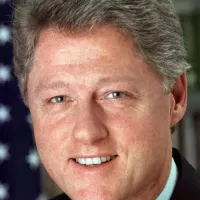
Bill Clinton the nd U S President - served as...

Stevie Wonder born Stevland Hardaway Morris is a highly influential...

Barack Obama the th U S President - was the...
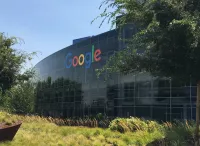
Google LLC is a multinational technology company specializing in online...

Martin Luther King Jr was a pivotal leader in the...
Trending

1 month ago Jayson Tatum Wants to Play with Son Deuce in NBA for Ten More Years.
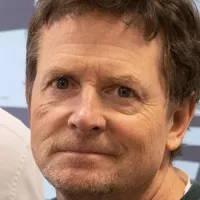
3 months ago Michael J. Fox Reflects on 'Teen Wolf' and 'Back to the Future' in Memoir.
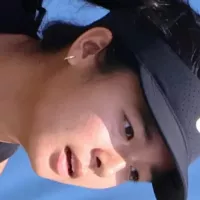
2 months ago Alex Eala Enters Hong Kong Campaign with Career-High Ranking, World No. 51

6 months ago Nicolas Cage reveals brief relationship with Sarah Jessica Parker; she ghosted him.
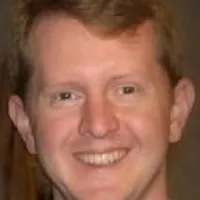
2 months ago Ken Jennings' surprising income from 'The Simpsons' role revealed: Residual checks explained.
7 months ago Prague dethroned as best place to live; David Lynch exhibition opens at DOX.
Popular

Stranger Things created by the Duffer Brothers is a popular...

XXXTentacion born Jahseh Dwayne Ricardo Onfroy was a controversial yet...

Kelsey Grammer is an accomplished American actor producer and singer...

Candace Owens is an American conservative political commentator and author...

Bernie Sanders is a prominent American politician currently serving as...
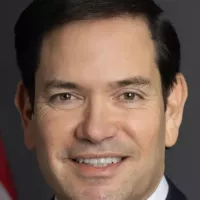
Marco Rubio is an American politician attorney and diplomat He...
